Germane Barnes: In conversation with Germane Barnes
September 20th - October 20th, 2024We sat down with acclaimed architect and designer Germane Barnes to hear about his creative process, the role of storytelling in his work, and his deep connection to his Chicago roots as he prepares to inaugurate his first museum exhibition at the Art Institute of Chicago. As Barnes reflects on his career, he reveals how his practice has evolved over the years and hints at exciting new directions. This conversation offers a glimpse into the mind of a designer who seamlessly blends narrative and materiality, always pushing the boundaries of his craft.
-
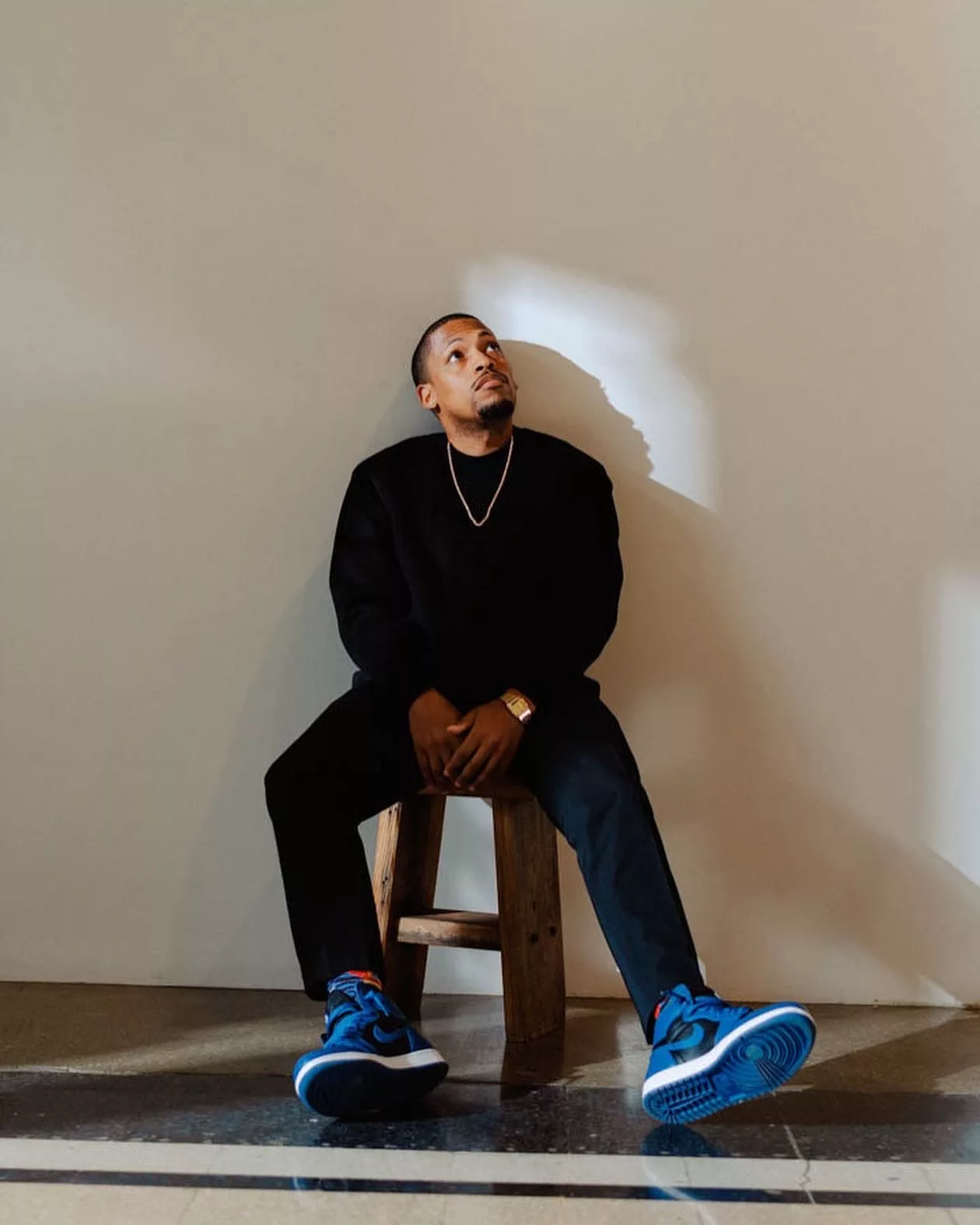
Germane Barnes. Photography by Lyndon French.
-

Germane Barnes: Griot, 2023. Install view at the Biennale Architettura 2023.
How important is storytelling in your work?
Storytelling is perhaps the most important part of my work because almost everything I do starts with a narrative. A little bit about my process: I start by writing, sometimes a stream of consciousness, a single word, a series of words, or something that I find interesting at the time. From there, I build a skeleton and figure out, “How do I create something that hits all the elements of this story?” I started this approach around 2010—it helped me find my design voice, thinking of making through the same lens as a writer tells a story. These processes have become inseparable in my practice. It’s what makes much of my work successful because I have a clear vision of what I’m trying to convey.
As I continue to develop all facets of my practice, the storytelling ranges from telling my own story to exploring the larger narrative of the diaspora. A lot of my recent material stems from that.
-
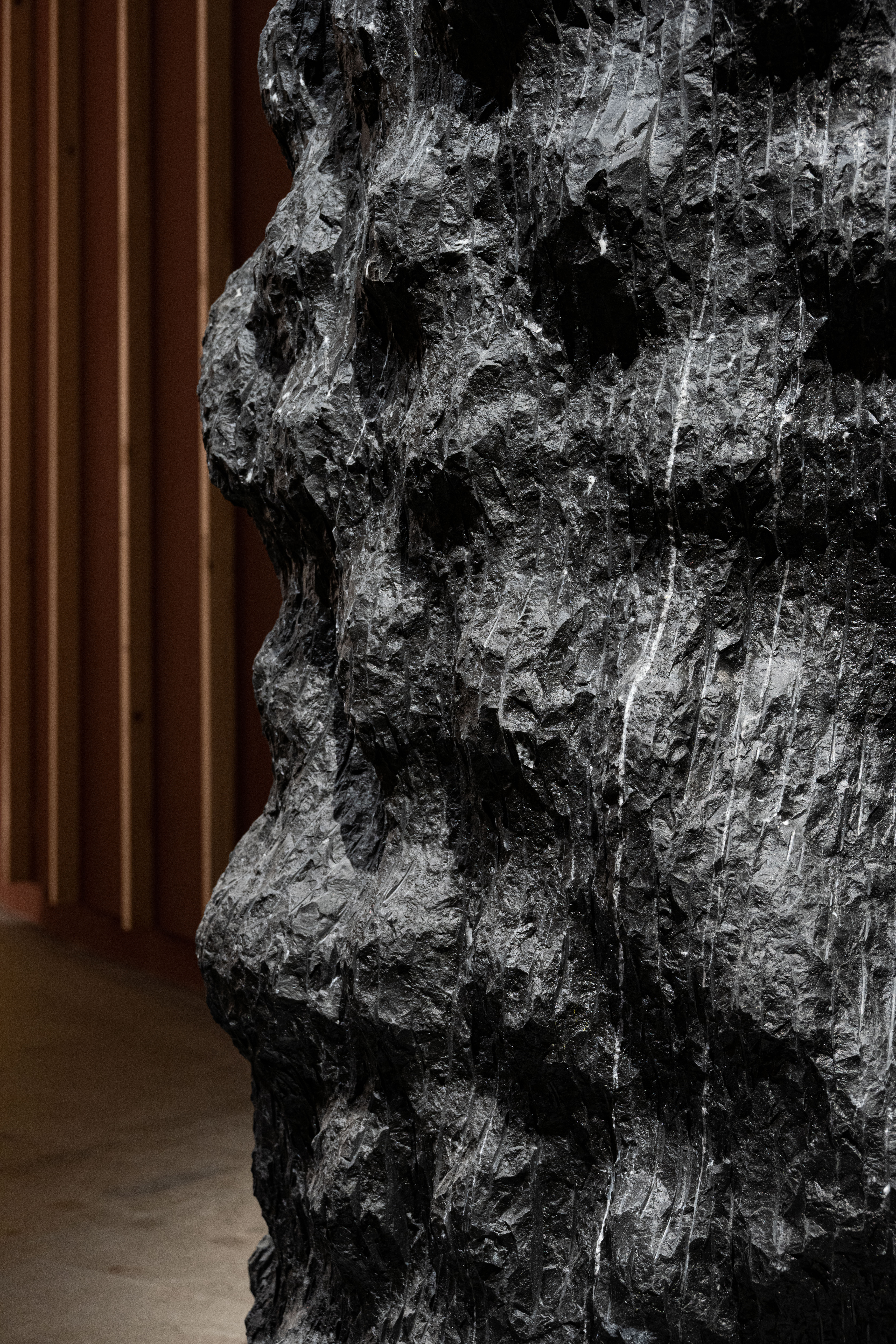
Detail of Germane Barnes, Identity, 2023, Black marquina marble, 108 x 48 x 48 in.
-
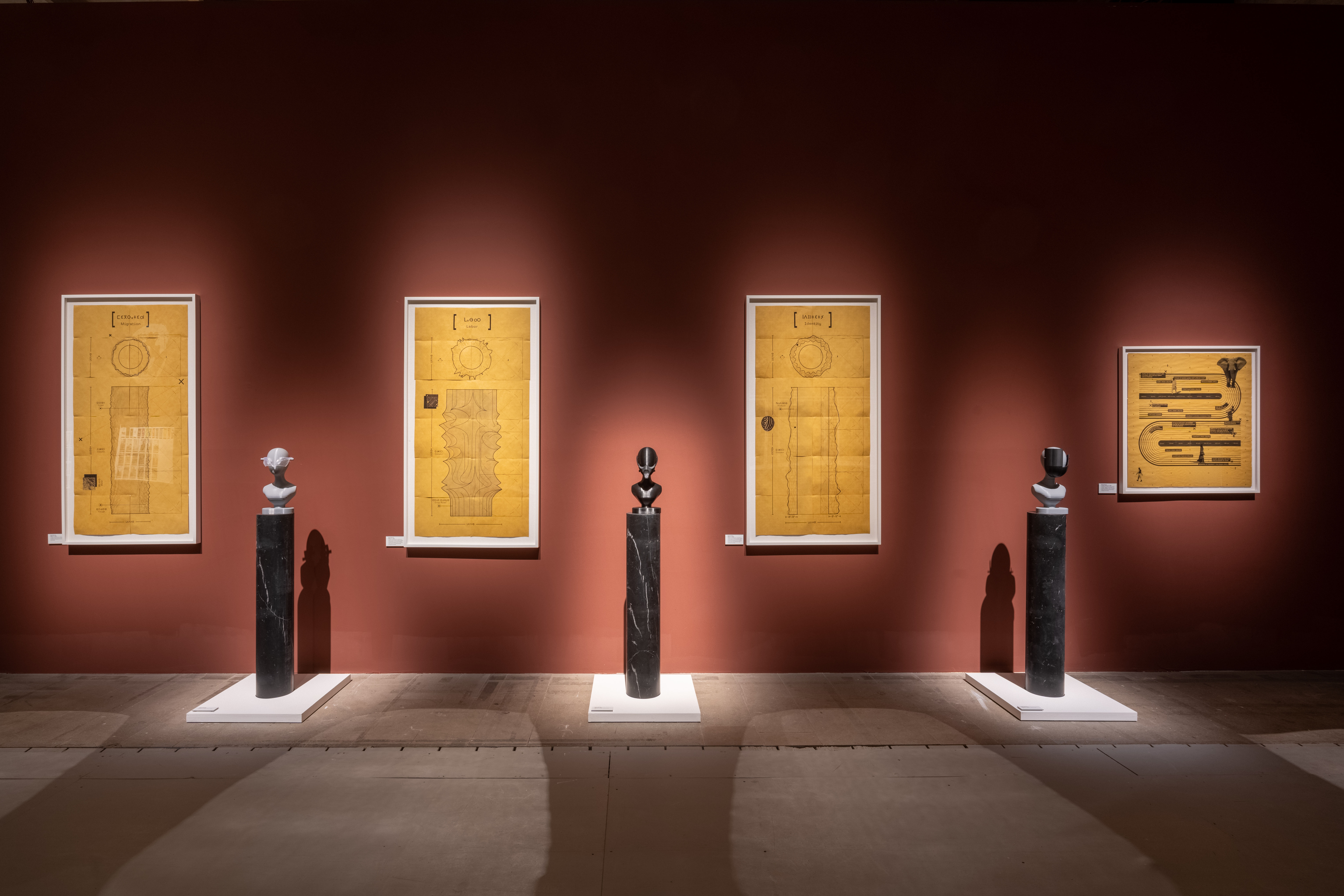
Germane Barnes: Griot, 2023. Install view at the Biennale Architettura 2023.
Maybe precisely because you work retroactively, your approach balances out the visual and the writing in a very poetic way.
I think that comes from when I was in graduate school working on my thesis project. My advisor said to me—work backwards. And I was like, “What do you mean?” And she’s like, “Well, what do you want to have at your final review? What do you want to have produced?” And I was like, “Oh man, I want to have models that look like this, and I want to have drawings that look like this, and I want some renderings.” She’s like, “All right, now you’ve got to figure out how to get there.” So that’s how I work now. People are like, “I want you to do this vessel.” I’m like, “Okay, the vessel should be this, but now how do I get to this point?”
-

Germane Barnes, Labor Column, 2023, Digital drawings on unique Roman, recycled paper, cut and tiled through analog processes, 60 x 30 in.
The mediums you select are also very important to your practice. Can you tell us more about how you decide your material choices?
Boredom.
So the material thing comes from, “All right, I’ve done enough things in this material, time to move on to something else.” How do I keep myself engaged and excited about the work? It goes from steel to wood to marble for a while. But now with the new works, it’s hair and clay.
-
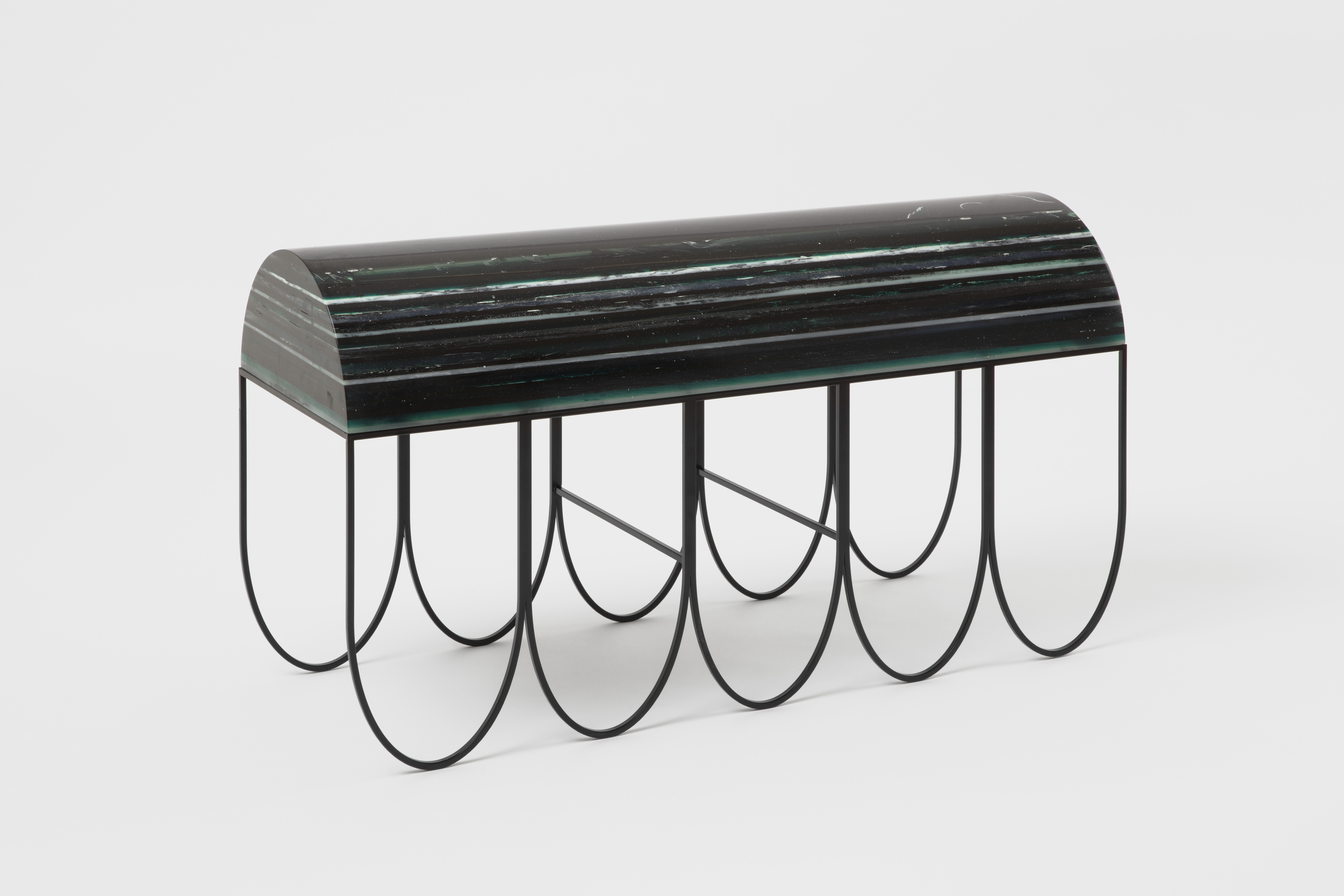
Germane Barnes, Los Angeles, 2022, Poured resin and powder coated steel, 18 x 32.5 x 11 in.
-
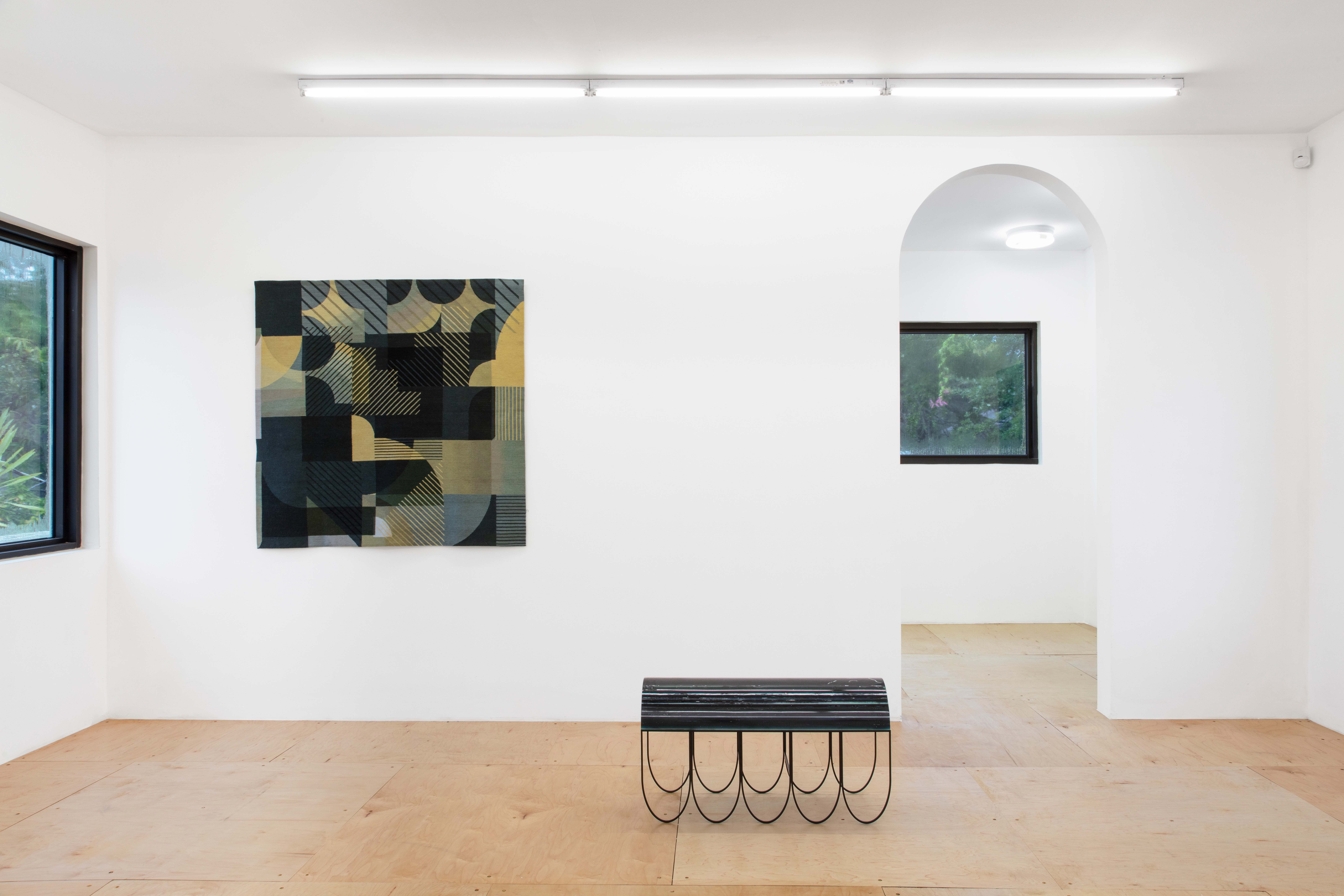
Germane Barnes: Unsettled, 2022, Installation view at Nina Johnson, Miami.
I recall us talking about this when you had your first exhibition with the gallery (Unsettled, 2022). You mentioned it in the context of paper, which has been such an important medium in your practice. I am thinking about the 2D visual statements that you started researching at the American Academy in Rome.
I try to stay ahead of the curve even the ones I create for myself. So for me, it’s been, “All right, what if I break down my practice into eras?” First era is architecture and design in LA. Second era is Opa Locka CDC. Third era is the porch. Fourth era is classical antiquity architecture.
That’s why the paper is so important—when I’ll stop using the paper, that means that portion of that era is done. So if people ask me to do porch stuff, I’m like, “No, that era is done. There’s no more porch stuff. It doesn’t exist anymore.” And it’s ironic because this year’s architecture biennial 2024–2025 is about the porch.
-
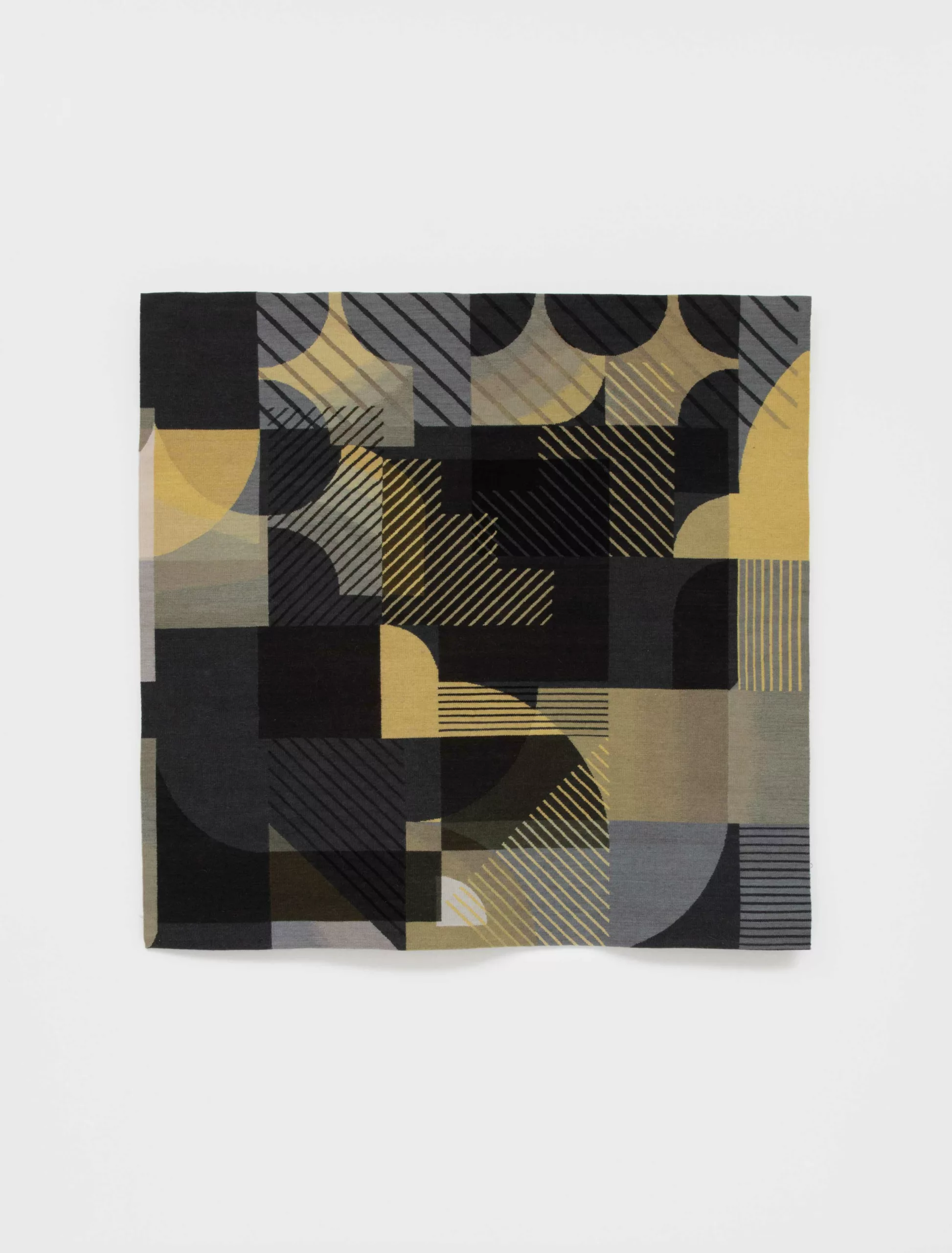
Germane Barnes, Chicago, 2022, Aubusson tapestry in New Zealand wool, 48 x 48.5 in.
-

Installation view of Germane Barnes: Columnar Disorder at the Art Institute of Chicago, 2024.
Your exhibition Columnar Disorder at the Art Institute of Chicago ties together all of these histories and eras, in a way. Tell us about it, how has it developed? It feels to me like such an important moment, not only because it’s a culmination of that era, but it’s also the beginning of something else.
I like the way you framed it because it really is the ending of one thing and the start of something else. It’s one of those nodes in a timeline where things start to shift. The most amazing thing to me is that my first ever museum show gets to be in my hometown. This means a lot to me. I’m proud to be a Chicagoan and I’m proud to be a designer from Chicago because I’m part of a long history of amazing people who’ve done that kind of stuff. That always brings a certain pride out of me.
For it to be the Art Institute of Chicago, which is one of the country’s flagship institutions is a big deal. So that’s incredible to me.
For it to be in a location where all of my family and friends can come, who maybe have never seen the work, or never had the chance, or who unfortunately never made it out of our neighborhood. They can go on the bus right downtown and be like, “I know him. That’s my best friend,” or “I know him. That’s my little cousin,” or “I know him. That’s my uncle.” That’s the kind of stuff that makes it super exciting for me, separate from the work.
So in that way, I look at it as an ending point. Now everybody in my family should know what it is I do for a living because a lot of them have no idea. It’s just like, “He’s always on planes. He’s always gone.” But what exactly does he do? I think that’ll help them figure it out.
-
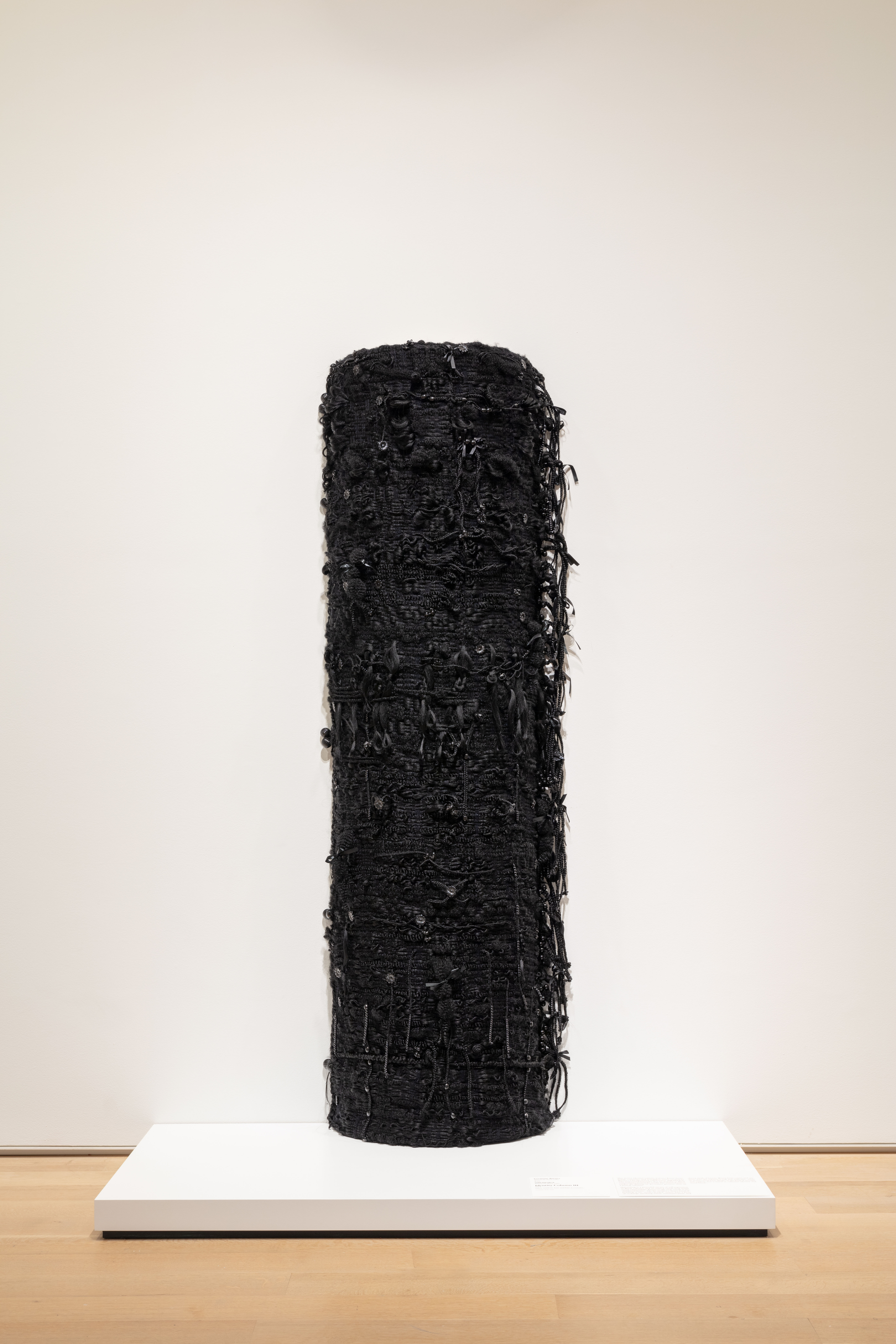
Germane Barnes and SHENEQUA. Identity Column III, 2024. Courtesy of the artists and the Art Institute of Chicago.
And what about the starting point?
It’s the first step into cementing myself in a certain echelon of practitioners. I’m insanely competitive. So for me, this show lets me know, all right, now we’re on the same playing field, and now how do I get past you to go to whatever that next level might be?
Something that is important for me to express now is that none of this happens by myself. Even though it might just be my name that’s on it, there’s a host of fabricators, collaborators, co-conspirators, and interlocutors who have helped make all this possible. I always want to make sure I give the proper acknowledgment to the people and organizations that have helped me be this successful. A lot of people like to forget about the steps they took to get here. I’d never want to be that person who says, “I did all this on my own,” because I didn’t. I have an amazing family that nurtured my talent and gave me every opportunity. I have amazing friends who give me real answers when I ask, “Is this good?” They’re like, “Hell no, that sucks,” or, “Oh yeah, that’s actually really good,” when I’m doubting myself. And I have friends who give me opportunities, like, “Hey, I thought about you for this thing.” The people who say your name in a room where you’re not there—I’m very thankful and very grateful to have all those people in my life.
Germane Barnes: Columnar Disorder will be on view at the Art Institute of Chicago from September 21st, 2024 to January 27th, 2025.
-
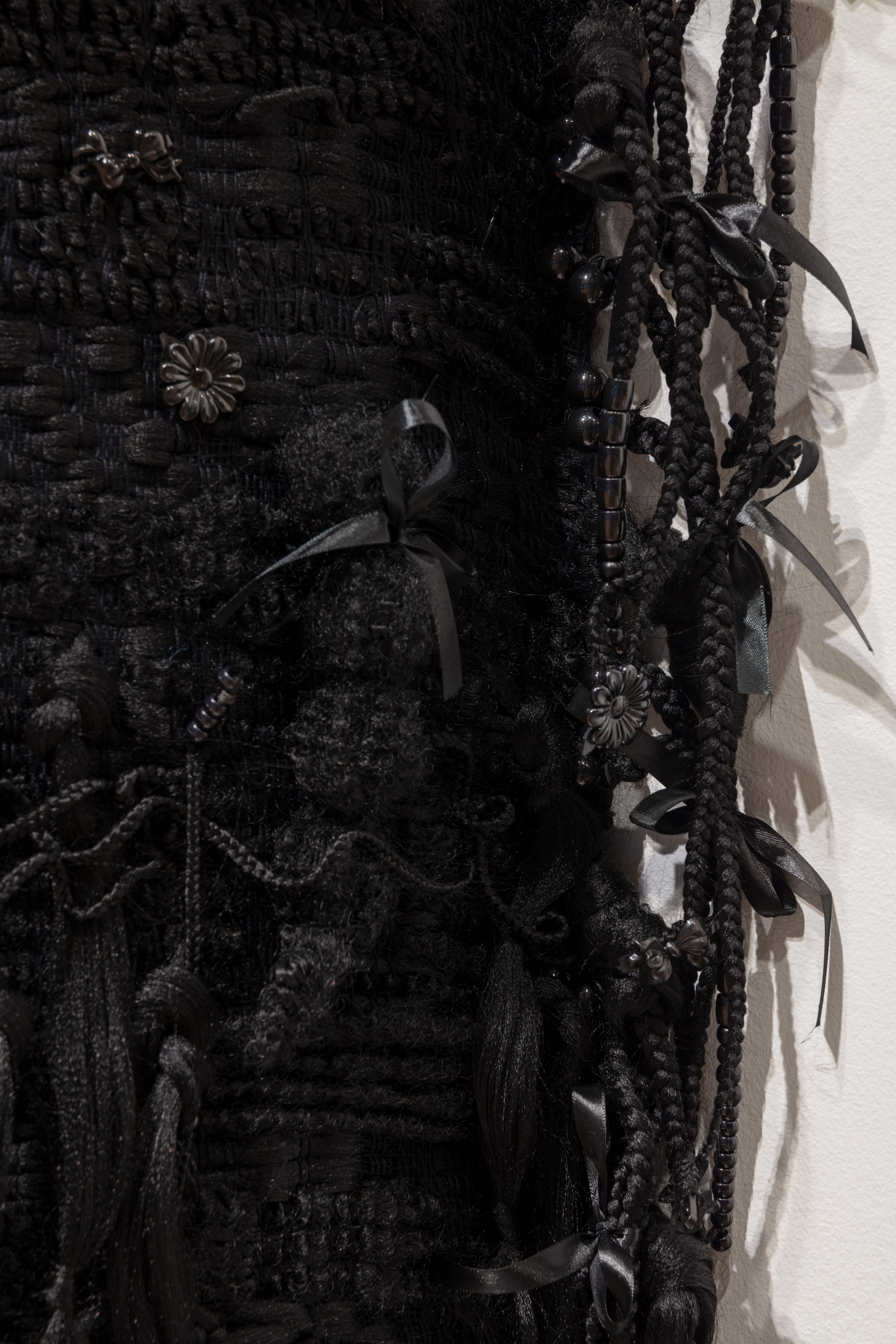
Detail of Germane Barnes and SHENEQUA. Identity Column III, 2024. Courtesy of the artists and the Art Institute of Chicago.
-
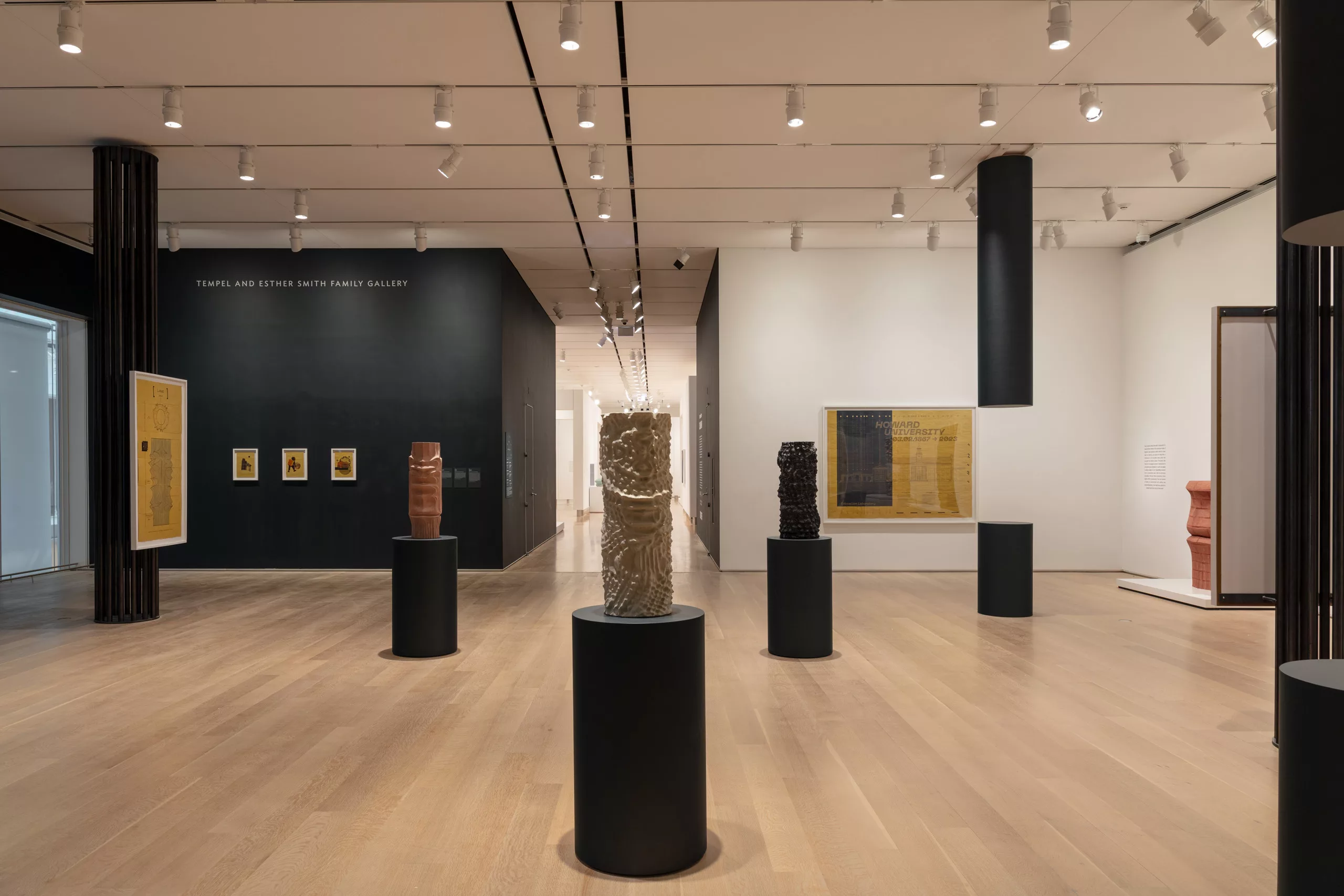
Installation view of Germane Barnes: Columnar Disorder at the Art Institute of Chicago, 2024.
Germane Barnes’ award winning research and design practice investigates the connection between architecture and identity, examining architecture’s social and political agency through historical research and design speculation. Mining architecture’s social and political agency, he examines how the built environment influences black domesticity. Born in Chicago, IL, Germane Barnes received a Bachelor’s of Science in Architecture from the University of Illinois at Urbana-Champaign and a Master of Architecture from Woodbury University where he was awarded the Thesis Prize for his project Symbiotic Territories: Architectural Investigations of Race, Identity, and Community. Currently he is an Associate Professor and the Director of The Graduate Architecture Program at the University of Miami School of Architecture. His work has been featured in international institutions most notably, The Museum of Modern Art NY, San Francisco MoMA, LACMA, Chicago Architecture Biennial, MAS Context, The Graham Foundation, The New York Times, Architect Magazine, DesignMIAMI/ Art Basel, Metropolis Magazine, Domus, Wallpaper* Magazine and The National Museum of African American History where he was identified as one of the future designers on the rise. Barnes is a recipient of the 2021 Rome Prize for Architecture and is one of the participants of the Venice Architecture Biennale 2023, The Laboratory of the Future.